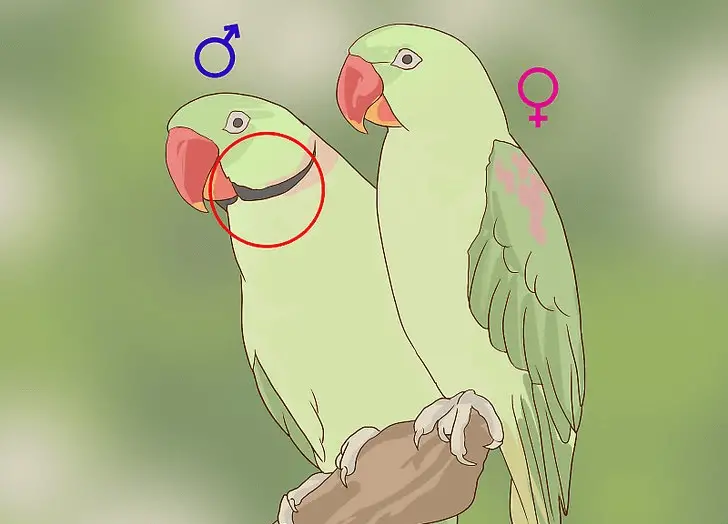
Parrot breeding: these animals are fascinating birds, both for the beauty of their plumage and their ability to “learn to talk”. But do not buy on impulse a bird that can live up to 50 years:
their breeding cannot be improvised and a minimum of knowledge in the matter is necessary, otherwise, the parrot will remain fearful or worse, will start to squeal and pluck its feathers.
Parrot Behavior
The term “parrot” designates all the species of birds of the order Psittaciformes, which has more than 300 species.
The parrots most often encountered inbreeding are the corydalis or loricules, the inseparable, the African Grey Parrots (or Jaco), and the greater Eclectus, the Poicephalus, the parakeets-sparrows, the amazons, and the macaws.
Morphologically, parrots have a stocky body, with a large head in relation to the body, round, expressive eyes, and a large beak.
Depending on the species, the beak is pointed or rounded. Parrots use their beak to take their food, defend themselves and climb (it then serves as a “3rd leg”).
The tail feathers vary in size (short in parakeets, very long in macaws). The claws of parrots are formed by 4 long fingers (the two in the middle are turned forwards and the two on the side are turned backward) provided with strong claws. Most parrots use their feet for climbing and grabbing food.
The plumage is often brightly colored: green, blue, yellow, or red.
Domestic parrots are generally peaceful, expressive, and intelligent. Their ability to imitate is linked to the finesse of their hearing and the diversity of sounds they can produce. But a lack of education can lead to behavioral problems that are difficult to bear (screaming, mutilation, etc.).
> If you want to learn to talk to your parrot, you must be able to devote at least 3 hours a day to it.
In the wild, parrots form very faithful male/female pairs. A parrot deprived of its companion (or companion) risks letting itself die of grief. It can also happen in captivity if the parrot is excessively attached to its master. If possible, buy two parrots upfront.
The life expectancy of a parrot varies from 20 years for the smallest to 80 years for the amazons or the gray parrots.
How to breed a parrot
SOURCE:MARLENE MC’COHEN
Parrot breeding cages
A cage of 40 x 40 x 80 cm is suitable for a small parrot or a young. For one or two medium-sized parrots, you need a cage measuring 50 x 100 cm on the ground, and 100-150 cm high.
The cage must be made of metal, other materials not resisting the force of a parrot’s beak. The bars (spaced 1.5 to 2.5 cm), will be crossed on at least two sides of the cage so that the bird can climb.
The bottom will be made of resistant plastic, with a sand drawer.
Choose stainless steel feeders.
Install perches or wooden branches, of sufficient diameter so that the parrot’s talons do not touch each other when it clings to them. Hang a heavy rope with knots and provide some wooden bird toys.
Place the cage in a busy room, at eye level, away from direct sunlight and drafts.
If you have the necessary space, you can also install the less chilly parrot species in outdoor aviaries.
Parakeet Mating

Parrot breeding
Parrot Food
Provide three feeders for your parrots: one for a mixture of seeds (the size of the seeds must be adapted to the size of the beak!), one for fruit (apples, pears, peaches, grapes, bananas, nuts, etc.), and one for vegetables (peppers, peas, corn cobs, carrots, spinach, zucchini, etc.).
Fruits and vegetables will be coarsely chopped. Avoid cabbage, raw potatoes, green beans, avocados, grapefruits, lemons, plums, rhubarb, and dried fruits.
> Even with an automatic drinker, don’t forget a small container of water in the cage: parrots like to soften their seeds before shelling them!
Parrot Reproduction
Parrots reach their sexual maturity between 2 and 6 years old. Depending on the species, the females lay 2 to 9 eggs per clutch (usually 3-4) and the brooding lasts between 20 and 28 days. The little ones take flight around 2 -2 ½ months. The breeding season gives rise to courtship displays.
Parrot Care
- Clean the cage daily of food scraps (parrots waste food) and excrement. Sponge the perches.
- Disinfect the cage once a month with a suitable product (ask your veterinarian for advice).
- You can clip the wings of large parrots so that they can no longer fly away. The shortened feathers regrow in a few weeks.
- Parrots are birds native to humid regions. To keep their feathers looking waxy and shiny, you should bathe or shower them in warm water twice a week.
- Your parrot must exercise every day: under close supervision, take it out of its cage and play with it in the room (close the windows and the curtains the first few times, and open them gradually so that it understands the presence of windows). Keep in mind that with its powerful beak, the parrot can be very destructive. Some parrots accustomed to a call can be released into a garden.
Parrot Health
Consult a veterinarian promptly if:
- your parrot remains prostrate, no longer grooms itself,
- if he has ruffled feathers or even if he is featherless in places,
- if his stools are watery, blood-tinged, or foamy,
- if his nostrils or eyes are runny or have crusts.
> Moulting takes place once a year. It can greatly tire the parrot.
Parrot male and female
In most parrots, it is impossible to distinguish between males and females. Only an endoscopy (under anesthesia) or a DNA test (from a few feathers) allows sexing.
The sex of the animals is of little importance if you do not want to breed; you can buy a pair of birds of the same sex. Two parrots of different species can also form a couple, but they cannot reproduce…
Parrot as pet
The easiest way is to accustom the parrot to climb on a stick stretched in front of him or on your arm.
- If you want to catch a large parrot, put a terry towel on its back and wrap it around its body. Hold the head between the thumb and middle finger, with the index finger resting on the top of the head.
- For a small parrot, grasp it in the full hand, wings glued to the body, thumb and index finger (or index and middle finger) surrounding the base of the neck, palm on the back of the animal, fingers folded over his stomach.
To catch a parrot that has escaped outside, do not run after it: lure it with treats or wait for it to land than water it (you still need a garden hose!) gently until its sodden feathers prevent it from flying.
TO BUY A PARROT
The Washington Convention guarantees the protection of endangered plant and animal species. Parrots threatened with extinction fall into category 1, their trade is prohibited even for those born inbreeding. The other parrots fall into category 2: their trade is subject to certain breeding rules.
Depending on the species of parrots concerned and their number, you will need to be in possession of a certificate of competence or a detention permit. Check with the prefecture.
> You must buy a ringed bird (the ring bears an engraved number) or carry a microchip and be provided with an intra-community certificate or a transfer certificate. It is better to go to a specialist than to a pet store.
Count between 300 and 700 $ depending on the size of an equipped cage. The price of birds is very variable: some large parrots can cost more than 2500 $!
SEXUAL BEHAVIOR IN COMPANION PARROTS
SOURCE:https://cdn.ymaws.com/
Do Parrots Mate For Life
When the parrot mating season comes, parrots find themselves a mate with their respective mating rituals. Once a pair is set, they mate to reproduce. Once their offspring get out of the egg, they become responsible parents.
Both male and female parrots share the equal brunt of raising their young. But that’s not all.
Parrots have a tribe system. They would remain with their own social group till they are not ostracized. When it comes to monogamy as sexual partners, they are hardly faithful. But they follow a system called social monogamy.
This means that the partners they choose will always be their partners for either all mating season or just one. Now, let’s try to break it down a little further.
SOURCE:https://beakcraze.com/do-parrots-mate-for-life




















